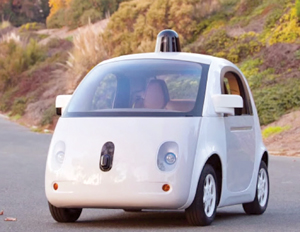Self-Driving Vehicles In Commercial Use, But Consumer Versions Still Years Away

This story appears in the Jan. 19 print edition of Transport Topics.
WASHINGTON — Automated vehicle operation is under way, and the technology could expand the availability and types of transportation options for commercial and consumer vehicles in years to come, industry and government experts said.
But they expressed broad agreement during a conference here that plenty of work is yet to be done.
“As this transition happens, a lot of parts need to come together,” said Monali Shah, head of intelligent transportation solutions for Chicago-based Here, a divison of Nokia, during a Jan. 12 panel discussion at the annual meeting of the Transportation Research Board. “These trends are coming together, and things are possible today that were not possible a few years ago.”
Advantages of autonomous, or self-driving, vehicles and of connected vehicles range from sharply reduced traffic accidents and injuries to more-efficient commuting and more productivity for trucking.
Driverless mining trucks from equipment-maker Caterpillar Inc. are commercially available and now in use, said Shailendra Singh, a senior program manager with the company.
“The trucks are completely autonomous; they can make decisions on their own,” he said. And those decisions are focused on safety, a key driver in the development of the technology, he said.
“These trucks are expensive and sophisticated; it is hard to find people with the skill set to drive a $4 million truck,” he said. “Most errors at mining sites occur because of human error; we replace that with software, which is predictable.”
The company’s automated vehicle system is in use at two mining sites in Australia. There is also a prototype being tested in the United States.
Singh said the company is in talks with other customers, but overcoming people’s reservations takes time.
“When we started this project, safety was a psychological barrier,” he said. “People did not believe it would be safe to have these [trucks] with no people. But the software gave us the opportunity for a step [forward] in safety. There are multiple layers of protection.”
There are also multiple layers of technology. Not only do the mining trucks get the technology, but so do on-site vehicles with drivers.
“Pickups, dozers and other machines all get hardware and software,” Singh said. “They can interact with each other.”
Interaction with the surrounding environment is a key focus of automated-vehicle testing at Google. The Mountain View, California, company is testing self-driving cars that do not feature a steering wheel, accelerator or brake pedals.
The goal of the company’s research is to “improve people’s lives by transforming mobility,” said Chris Urmson, director of Google’s self-driving cars program. He pointed specifically to the elderly and blind as population segments that could benefit from the technology, but he noted that self-driving cars also could improve the lives of people who spend a lot of time behind the wheel. But the industry is a long way from automated vehicles that let their owners kick back while the vehicle does the driving, Shah said.
“It is not going to happen all in one step. There are many factors we have to consider,” she said.
And panelists agreed that safety is at the top of the list.
“No autonomous vehicle will be 100% safe. Even though we developed and proved an increase in safety, people will always blame the technology,” Singh said.
But Singh believes the industry has willing partners in governments that have been supportive of allowing the technology to evolve. “We were blown away by how easy governments have been to work with,” he said.
Representatives from state departments of transportation said during a separate panel on autonomous vehicles that governments and industry should support convergence of various states’ regulations.
Regulation of the technologies “can’t be a one-state solution,” said Kirk Steudle of the Michigan Department of Transportation.
But all 50 states are at different levels of development in regulation or infrastructure, said John Halikowski, director of the Arizona Department of Transportation.
“It’s going to take some leadership . . . to get a handle on where we are going,” he said, adding that it is difficult for governments to be sure that the infrastructure they install “is not outdated in four to five years.”
The state of Utah is working with a public-private partnership to build an extensive system of fiber-optic cable embedded in roadways as a foundation for vehicle-to-vehicle or vehicle-to-infrastructure communication, said Utah DOT Executive Director Carlos Braceras. He added that, with vehicle connectivity, “we will see truck drivers with five, six or 10 trucks” together.

